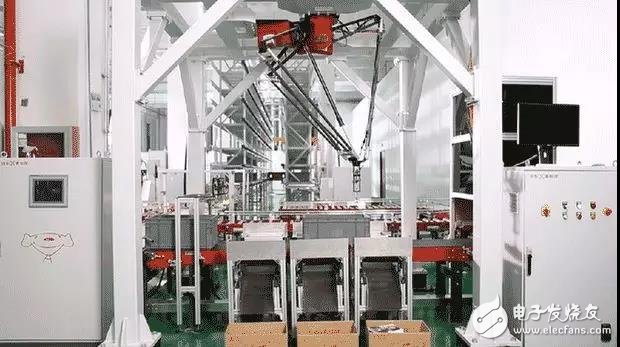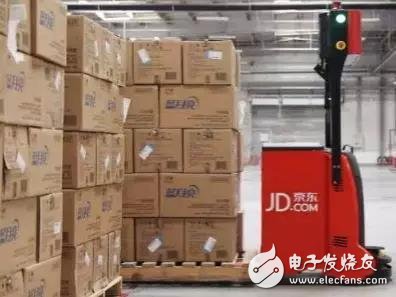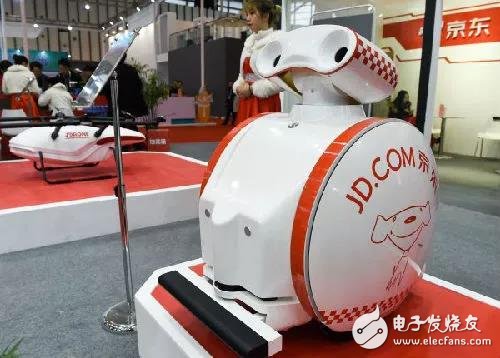Recently, Jingdong first exposed no warehouse. The unmanned warehouse is located in the third phase of the “Asian No.1†base in Jiading, Shanghai, covering an area of ​​about 40,000 square meters. It is the most automated and uniquely automated warehouse in Jingdong, with a daily handling capacity of 200,000.
From the scene, the entire unmanned warehouse is divided into three main areas: warehousing + sorting + packing area, storage area and outbound area. The interface reporter saw at the scene that the assembly line has been unmanned, and a small number of staff members are engaged in operation and maintenance and optimization.


Application of six-axis industrial robot in logistics and warehousing industry
Entering the gate of the unmanned warehouse, the first is a white robot that measures the volumetric weight of the commodity. The classification and packaging of goods are completely done by conveyor belts and robots. They will judge how to arrange and combine goods according to the bar code of the goods and the bar code of the order information. The packaging of all goods is based on the actual size of the machine to cut the cutting foam packaging or cardboard packaging, which is conducive to the scientific and rational use of packaging materials.
In the storage area, there are rows of containers that are very closely packed. Tens of thousands of goods are stored and unloaded by robots and robotic arms. High-density storage will save space and is also the most widely used automation equipment in JD.

Application of parallel robots in sorting
In the unmanned sorting area, there are 300 “little red people†responsible for sorting, running at a speed of 3 meters per second. At the same time, all the routes of "Little Red Man" are selected by computer control. "Little Red Man" will avoid each other; it will be automatically moved to the charging pile on the wall to charge - 10 minutes of charging, can work for 4 hours.
In the outbound area, more than 300 of the smallest “Little Red Man†AGVs are responsible for placing each small parcel into different transshipment packages according to the order address. The medium-sized AGV completes the second round of distribution and packaging, and the large AGV directly puts the last The large parcel sent to the JD terminal distribution site is sent to the conveyor belt. The conveyor belt can be extended directly from the warehouse to the transport vehicle outside the warehouse.
The intelligent control system that controls the whole of the unmanned warehouse is the “smart†brain independently developed by Jingdong. The warehouse management, control, sorting and distribution information systems are all developed by Jingdong and have independent intellectual property rights. The whole system is integrated by Jingdong. . The intelligent brain of the unmanned warehouse can calculate the 68 billion feasible paths of more than 300 robots in 0.2 seconds and make the best choice.

In terms of robot use, including traditional AGV forklifts, six-axis robots, automatic robots and other robots of more than a dozen different types of work, the total number of robots in the 40,000 square meters warehouse is up to thousands. Jingdong said that such unmanned warehouse efficiency is 10 times that of traditional warehouses.

Smart Logistics is changing the traditional form of logistics. Zhang Genyun, the chief planner of Jingdong Logistics and the head of the unmanned warehouse project, said that the warehouse is divided into five stages, namely, traditional warehouse, intelligent warehouse, small-person warehouse, and unmanned warehouse. In the final unmanned warehouse, Jingdong is in the process of moving towards the ultimate unmanned warehouse. She said that the future unmanned warehouse operation mode will cover unmanned operations of all categories and all business types.
However, on the one hand, due to cost reasons, the above-mentioned unmanned facilities are applied at different stages in the country; on the other hand, the unmanned warehouses have extremely high requirements for product standardization, and the above unmanned warehouses are only suitable for small parts operations, most of which are 3C products such as mobile phones have high standardization and small volume. In the third phase of the unmanned warehouse next door, it is a semi-automatic operation site for middleware.
Since the birth of industrial robots, it has become a key equipment in automated production and logistics systems, and has become an important part of the rapid development of modern logistics systems. In the industrial manufacturing and logistics industries, in order to improve automation and ensure product quality, high-speed logistics lines are usually required throughout the entire production process. In recent years, the explosive growth of e-commerce and express delivery industry has spawned the vigorous development of logistics robots. Robots have gone from traditional palletizing, demolition and handling to warehousing, sorting and distribution.
As an electric trademark company, Amazon launched the wheeled mobile robot KIVA (also known as AGV) for sorting in 2013, which realized large-scale “goods-to-person†sorting in parallel, for the storage of e-commerce. And sorting has brought about revolutionary changes. This model is combined with the Internet and big data technology to improve the perception and self-determination of the logistics system, and the degree of intelligence is significantly improved. Taking this as an opportunity, China's logistics robot landscape is also expanding from the traditional industrial field to the commercial service field.
In recent years, logistics robots have been greatly developed and applications are expanding. From the operational link and technical point of view, there are two main types of robots used in the field of warehousing and logistics. One is industrial robots that are applied to items such as palletizing, unpacking, sorting and packaging, such as articulated robots and Cartesian robots. , parallel robots, cooperative (composite) robots, etc. The other type is a wheeled mobile robot for handling and sorting, that is, an automated guided vehicle (AGV).
With the disappearance of China's demographic dividend and rising labor costs, the only way for enterprises to improve the effective production rate, that is, the degree of automation of production. The diversification of market development and user demand is bound to put forward higher requirements for logistics robots.
48V Battery Pack ,Switch Battery Pack,Portable Lithium Battery Pack,48V Lithium Ion Battery Pack
Zhejiang Casnovo Materials Co., Ltd. , https://www.casnovonewenergy.com